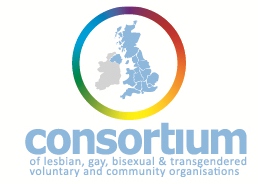The Home Office commissioned GIRES to prepare a toolkit for schools to use in combating transphobic bullying. The material has undergone extensive testing by people involved in education, government agencies, the unions, the police and organisations working in the transgender field.
Executive Summary
During the past decade, transgender issues have become a major component of diversity programmes throughout the public service sector. Their present prominence results from continuing rapid growth in the number of transgender people who reveal their gender variance, and substantial strengthening in the laws that support and protect them.
Despite the enactment of supportive legislation, transgender people continue to experience widespread discrimination in the educational environment, in the workplace and in society generally. As illustrated by the the cases appended to the toolkit, they are often the victims of transphobic bullying and crime. Bullying, that is not dealt with promptly and effectively can escalate into criminality. As part of its crime reduction programme, the Home Office has provided this toolkit to help schools meet their obligation to combat transphobic bullying.
Gender variance may be detected in children as young as two: it causes extreme stress for youngsters and their families. This is alone would impair the young person’s achievements at school. Bullying severely aggravates this.
Transgender members of staff also experience stress, especially if they undertake the transition from the gender role assigned to them at birth to that which accords with their gender identity. They too are the targets for transphobic bullying and crime.
In responding to the challenge that transphobic bullying presents, schools need to understand the nature of gender variance, the biological factors involved in its occurrence and how it differs from sexual orientation . Of course, homophobic bullying, based on a person’s actual or perceived sexual orientation, is in many respects similar to transphobic bullying. Moreover in pre-pubertal children, it may be difficult for them or those who care for them to distinguish between uncertainties of gender identity and sexual orientation. However, perpetrators of transphobic bullying and crime do use specific terms of abuse: ‘he/she/it’, ‘girl with a cock’, that reveals their special hatred for transgender people.
Although schools may think that they have no transgender people to worry about, that is statistically unlikely. In any school of 1,000 pupils there are likely to be 6 who will experience transgenderism throughout their lives. There are likely to be others who have a transgender parent or close relative. Among pre-pubertal pupils, there are likely to be 60 in 1,000 who will experience atypical sexual orientation that may be difficult to distinguish from atypical gender identity. There is likely to be one transgender person in 170 members of staff.
Unlike people who experience atypical sexual orientation, people who experience severe gender variance require medical care to deal with their condition. Those who are entering puberty may experience intensifying stress, which may have a negative impact on their school work, as their bodies become increasingly discordant with their gender identities. Although major medical centres overseas provide treatment to suspend puberty, that treatment is not available in the UK. Gender variant adults who undertake the transition to a new gender role and receive hormone and surgical treatment to realign their bodies correctly, may require time off work to attend medical appointments, undergo surgery and convalesce.
Transition is a complex process that requires trans people also to undergo many non-medical changes in the way they live and work, as well as in their relationships.
Schools are bound by a general duty to protect all their transgender pupils and staff from transphobic bullying. In the case of staff, there is also a range of specific legislation that requires schools to consider their needs in Gender Equality Schemes and in procedures for handling transition.
This toolkit contains guidance for schools on effective ways to support and protect transgender pupils and staff. It also suggests what needs to be done for other staff members. The appendices include a model policy, an example of a letter written to staff about a pupil’s transition and a self-assessment checklist. Schools need to see that people who transition are able to lead successful and fulfilling lives and this toolkit therefore includes a number of inspirational role models.
Although this toolkit is reasonably comprehensive, schools may need more information than it contains. There are links provided, throughout the text, to external information sources. The final section of the toolkit indicates where schools can find further information, advice and training.










